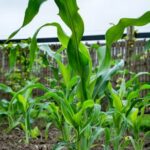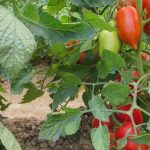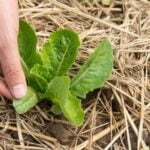Welcome to the world of vegetable gardening, where you can cultivate your own fresh and flavorful produce right in your own backyard. Whether you’re a seasoned green thumb or just starting out, there are countless benefits to growing your own vegetables. In this article, we’ll explore the joys of vegetable gardening and provide helpful tips for getting started, choosing the right vegetables, caring for your plants, and connecting with other like-minded vegetable gardeners.
Vegetable gardening offers a multitude of benefits for both the body and mind. Not only does it provide you with a sustainable source of nutritious food, but it also allows you to reconnect with nature and experience the satisfaction of nurturing something from seed to harvest.
As an added bonus, gardening can also help reduce stress and improve mental well-being. With more people turning to vegetable gardening as a rewarding and therapeutic hobby, joining the community of vegetable gardeners can provide valuable support and knowledge sharing.
In this comprehensive guide, we’ll cover everything you need to know about starting your own vegetable garden, from planning and preparing your garden space to choosing the best vegetables for beginners. We’ll also offer tips for planting and caring for your plants, protecting them from common pests and diseases, harvesting your homegrown produce, and connecting with other vegetable gardeners in your area. So roll up your sleeves and get ready to dig into the world of vegetable gardening.
Benefits of Vegetable Gardening
The benefits of vegetable gardening are numerous, and there are compelling reasons why more people are choosing to start their own gardens. One of the main advantages is the ability to have access to fresh, organic produce right at your fingertips. This can lead to a healthier diet, as homegrown vegetables are often free from harmful pesticides and chemicals that are commonly used in commercial farming.
In addition to the health benefits, vegetable gardening also serves as a form of physical exercise. Tending to a garden involves activities such as digging, planting, weeding, and harvesting, all of which help keep gardeners active and in good shape. Moreover, spending time outdoors in the sunlight is beneficial for mental well-being and can help reduce stress.
For those looking to save money on groceries, having a vegetable garden can significantly cut down on food costs. In fact, according to the National Gardening Association, an investment of $70 in a home vegetable garden can yield $600 worth of produce – a substantial return on investment. Lastly, by growing your own vegetables, you are reducing your carbon footprint by decreasing food miles and packaging waste associated with store-bought produce.
| Advantages | Benefits |
|---|---|
| Fresh Organic Produce | Healthier Diet |
| Physical Exercise | Mental Well-being |
| Cost Savings | Reduced Carbon Footprint |
Getting Started
Setting Your Goals and Priorities
Before you start digging in your backyard, it’s important to set your goals and priorities for your vegetable garden. Determine what you want to get out of this experience.
Are you looking to grow enough produce to feed your family throughout the summer or are you simply interested in trying out a new hobby? Establishing your priorities will help you make decisions about the size of your garden, the types of vegetables you’ll grow, and the amount of time and effort you’re willing to invest.
Choosing the Right Location
One of the most crucial steps in planning your vegetable garden is choosing the right location. Most vegetables need at least 6 hours of sunlight, so it’s essential to pick a spot with adequate sun exposure. Additionally, make sure that the location has good soil drainage and access to water. Keep in mind any potential obstacles such as trees that could shade your garden or underground utility lines that could be damaged by digging.
Planning Your Garden Layout
Once you’ve chosen a suitable location, it’s time to plan your garden layout. Consider how much space each type of vegetable needs when deciding where to plant them. Think about which vegetables are compatible with each other and which ones might compete for resources.
You may also want to consider adding features such as raised beds or trellises to maximize space and improve accessibility for maintenance. Taking the time to carefully plan your garden layout will help ensure a successful growing season for all vegetable gardeners.
Choosing the Right Vegetables
When it comes to starting a vegetable garden, choosing the right vegetables is crucial, especially for beginners. It’s important to select plants that are easy to grow and maintain, ensuring a successful and satisfying gardening experience. For new vegetable gardeners, there are several options that are ideal for getting started.
One of the best vegetables for beginners is tomatoes. They are relatively low-maintenance and can be grown in containers or in the ground, making them versatile for different gardening setups. Additionally, lettuce is another excellent choice for those new to vegetable gardening. Lettuce varieties such as leaf lettuce and romaine are fast-growing and can be harvested continuously throughout the growing season.
Carrots are also great for beginners as they require little maintenance once planted. They grow well in many types of soil and can even be grown in pots or raised beds. Lastly, zucchini is a beginner-friendly vegetable that produces an abundant harvest. It thrives in warm weather and does well when given plenty of space to spread out.
Choosing these easy-to-grow vegetables will give novice vegetable gardeners a positive experience as they learn the ins and outs of tending to their own homegrown produce.
| Vegetable | Ease of Growth |
|---|---|
| Tomatoes | Relatively low-maintenance, versatile |
| Lettuce | Fast-growing, continuous harvesting |
| Carrots | Little maintenance, grows in different soils |
| Zucchini | Thrives in warm weather, abundant harvests |
Planting and Caring for Your Vegetables
Choosing the Right Location
When it comes to planting your vegetables, it’s important to choose the right location for your garden. Most vegetables need at least 6 hours of direct sunlight per day, so look for a spot in your yard that receives ample sunshine. Additionally, make sure the area has good drainage to prevent waterlogging, which can lead to root rot.
Preparing the Soil
Before planting your vegetables, take the time to prepare the soil. Remove any weeds and debris, and then loosen the soil with a garden fork or tiller. Incorporate organic matter such as compost or aged manure to improve soil structure and fertility. This will provide a healthy environment for your plants to grow and thrive.
Watering
Proper watering is essential for the success of your vegetable garden. Different vegetables have different water needs, so it’s important to research each plant’s specific requirements. In general, most vegetables need about 1 inch of water per week from rain or irrigation. Water deeply and less frequently to encourage strong root growth.
Weeding and Mulching
Regular weeding is crucial to ensure that your vegetable plants aren’t competing with unwanted plants for nutrients and space. Consider using mulch around your plants to suppress weed growth, conserve moisture, and regulate soil temperature. Organic mulches like straw or shredded leaves can also contribute organic matter to the soil as they break down.
Fertilizing
To keep your vegetable plants healthy and productive, it’s important to provide them with essential nutrients. Consider using an all-purpose vegetable fertilizer according to package instructions or amend the soil with organic fertilizers like compost or fish emulsion. Over-fertilizing can be just as harmful as under-fertilizing, so be mindful of application rates.
By following these tips for planting and caring for your vegetables, you’ll be well on your way towards a successful harvest in your own home garden. Remember that every gardener’s experience is unique; try out different techniques and see what works best for you. Connecting with other vegetable gardeners can also provide valuable insights and support along the way.
Dealing With Common Garden Pests and Diseases
When it comes to maintaining a successful vegetable garden, one of the biggest challenges faced by vegetable gardeners is dealing with common pests and diseases. These can quickly wreak havoc on your carefully cultivated plants if not properly managed. Here are some tips for protecting your garden from these potential threats:
1. Identify the pests and diseases: The first step in protecting your plants is being able to recognize the signs of common pests and diseases that may affect your vegetables. Keep an eye out for holes in leaves, discolored patches, or wilting, as these could be indicators of a problem.
2. Implement preventative measures: There are several proactive steps you can take to prevent pests and diseases from taking hold in your vegetable garden. This includes practices such as crop rotation, companion planting, and maintaining proper spacing between plants to improve air circulation.
3. Use organic pest control methods: For those who prefer to avoid chemical pesticides, there are a variety of natural remedies that can help control garden pests. For example, introducing beneficial insects like ladybugs or using neem oil can help keep harmful pests at bay without harming the environment or beneficial insects.
By following these tips, vegetable gardeners can minimize the risk of their plants being damaged by common pests and diseases, ultimately ensuring a bountiful harvest of homegrown produce to enjoy.
Harvesting and Enjoying Your Homegrown Produce
After all the hard work of planning, planting, and nurturing your vegetable garden, it’s finally time to reap the rewards of your labor. The thrill of harvesting your own homegrown produce is one of the most satisfying aspects of being a vegetable gardener. Not only do you get to enjoy the freshest and most flavorful fruits and vegetables, but you also gain a sense of pride and fulfillment from eating food that you’ve grown with your own hands.
When it comes to harvesting your vegetables, timing is crucial. Each type of vegetable has its own optimal harvest window, so it’s important to know when they are ready to be picked. Here are some general guidelines for harvesting popular vegetables:
- Tomatoes should be harvested when they reach full color and are slightly soft to the touch.
- Leafy greens such as lettuce and spinach can be harvested when the leaves are large enough to eat but before they bolt or become bitter.
- Root vegetables like carrots and radishes should be pulled from the ground once they have reached a good size and color.
Once you’ve harvested your vegetables, it’s time to savor the flavors of your labor. Whether you’re enjoying a crisp salad made from freshly picked lettuce and tomatoes or savoring the sweetness of a just-picked strawberry, there’s nothing quite like the taste of homegrown produce.
And don’t forget to share your bounty with friends and family – there’s no better way to spread joy than by sharing the fruits (and vegetables) of your labor with others.
Remember, being a part of a community of vegetable gardeners can provide support, inspiration, and valuable knowledge. Whether it’s joining a local gardening club or participating in online forums, connecting with other vegetable gardeners can help you learn new techniques, troubleshoot problems, and share in the joys and challenges of growing your own food. By building connections with fellow vegetable gardeners, you’ll be able to enrich your gardening experience and continue to grow as an accomplished grower.
Connecting With Other Vegetable Gardeners
In the world of vegetable gardening, connecting with other like-minded individuals can be an incredibly fulfilling experience. Whether you’re a seasoned gardener or just starting out, joining a community of vegetable gardeners can provide valuable support, knowledge, and camaraderie. By sharing tips, experiences, and even excess produce, you can build relationships and learn from others while contributing to a vibrant gardening community.
One of the benefits of connecting with other vegetable gardeners is the opportunity to exchange valuable insights and advice. Whether it’s discussing pest control methods, comparing planting schedules, or sharing favorite varieties, being part of a gardening community allows you to tap into a wealth of collective knowledge. Additionally, engaging with fellow vegetable gardeners can provide motivation and inspiration as you navigate the ups and downs of tending to your garden.
Joining a local gardening group, participating in online forums or social media groups, or attending gardening workshops are all great ways to connect with other vegetable gardeners. These platforms allow you to seek guidance when facing challenges, celebrate successes, and form lasting friendships with individuals who share your passion for cultivating homegrown produce.
Ultimately, by joining the larger community of vegetable gardeners, you not only enrich your own gardening journey but also contribute to the greater network of growers working toward a healthier, more sustainable food system.
Frequently Asked Questions
What Should I Garden for Beginners?
For beginners, it’s best to start with easy-to-grow plants like tomatoes, lettuce, and peppers. These vegetables are relatively low-maintenance and can thrive in a variety of growing conditions, making them ideal for those new to gardening.
What Does Every Vegetable Gardener Need?
Every vegetable gardener needs a set of basic tools including a hand trowel, garden fork, watering can or hose, gloves, and a sturdy pair of shears. Additionally, having high-quality soil, seeds or seedlings, and ample sunlight are essential for success.
What Is the Hardest Vegetable to Grow?
One of the hardest vegetables to grow is often considered to be asparagus. It requires well-drained soil and can take up to three years before it reaches full production. Asparagus also needs regular maintenance such as weeding and pest control, making it a challenging crop for many gardeners.

If you’re looking to get into vegetable gardening, or are just looking for some tips on how to make your current garden better, then you’ve come to the right place! My name is Ethel and I have been gardening for years. In this blog, I’m going to share with you some of my best tips on how to create a successful vegetable garden.





